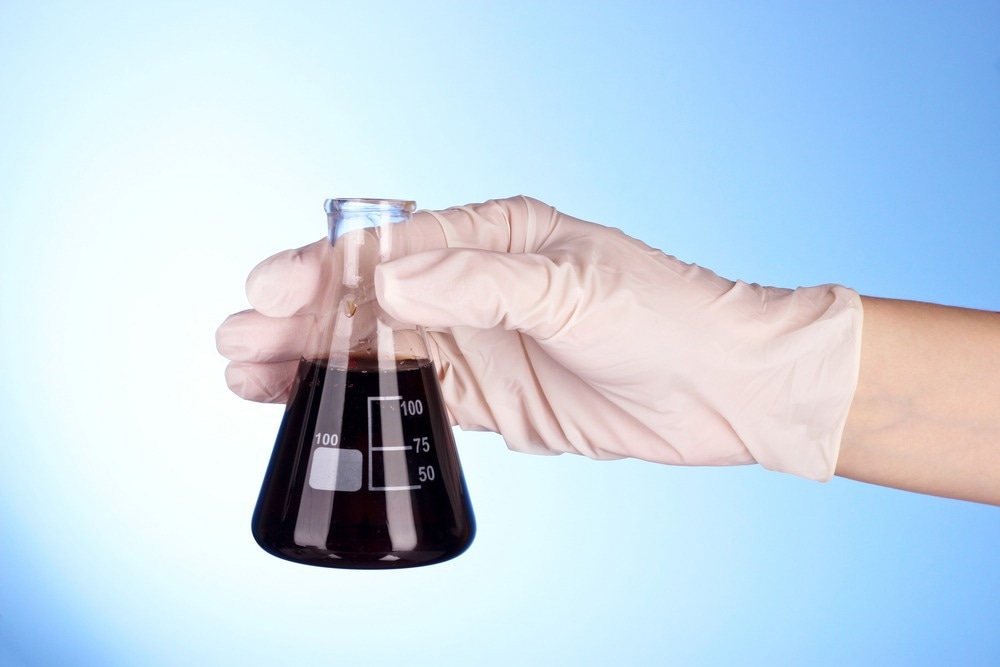MXenes have been established as prime substances to be used in various applications due to their favorable properties. Yet these materials face problems when it comes to degradation.

Study: Combination of High pH and an Antioxidant Improves Chemical Stability of Two-Dimensional Transition-Metal Carbides and Carbonitrides (MXenes) in Aqueous Colloidal Solutions. Image Credit: Africa Studio/Shutterstock.com
To solve this problem, a paper published in the journal Inorganic Chemistry presents an innovative technique to improve the chemical-based stability of the MXenes.
MXenes – What Exactly Are They?
MXenes have been widely explored during the last ten years owing to their remarkable electrical, thermal, optical, and mechanical characteristics. These 2-dimensional configurations of metal carbides and nitrides are often synthesized through hydrous chemical etching via their MAX phase precursors.
MXenes are synthesized in a colloidal form in aqueous environments, which is also a popular storage method due to these compounds having a strong affinity for water.
The Uniqueness of MXenes
MXenes' interesting mix of high electrical conductivity and hydrophilicity (strong affinity for water) and their capacity to tolerate intercalants make them extremely useful for applications like energy production and storage, water purification, sensing, and electromagnetic interference shielding.
Nonetheless, little is understood regarding the chemical nature of these 2D materials, and even lesser about the effect of variables like temperature, pH, and solution concentration on their reactivity.
Hydrolysis – The Main Contributor to MXene Degradation
Previous research has demonstrated that hydrolysis is the primary process contributing to the degradation of MXene in aqueous solutions. It has also been discerned that the surrounding pH level may considerably impact the pace of hydrolysis.
While only a few papers on the subject have been published, the rapid degradation of MXene in basic media has been recorded and interpreted quite thoroughly, primarily the reaction between MXene and OH-.
These and many other contradictory outcomes concerning the chemical stability of Mxene in the colloidal stage require further investigation. Direct identification of the byproducts of Mxene reactions offers a comprehensive technique to analyze the responsiveness of these materials in this respect.
Basis of Current Research of Mxenes
In this work, the researchers used a direct examination of the gas-based reaction byproducts using Raman spectroscopy and gas chromatography to evaluate Mxenes’ chemical stability over a period in aqueous solutions at varying starting pH values.
The examination is further supplemented by observing Mxene concentration in the solution via UV−vis spectroscopy, along with electrical conductivity tests of Mxene sheets and post-mortem study of degradation associated with Mxene solid products using X-ray diffraction, X-ray photoelectron spectroscopy, and Raman spectroscopy.
To mitigate the impacts of the counterions, which may inhibit the effects of pH level when an alkaline or acidic solution is utilized, the team used an electrolyte that was pH-inert.
The researchers devised a synergistic method for suppressing MXene breakdown and extending life span by efficiently blocking hydrolysis and oxidation.
The team anticipated that the findings would help to design better storage techniques for MXene aqueous solutions and would lead to a better understanding of basic chemical processes.
Results of the Study
The impact of aqueous solution's pH level on MXene degradation was investigated gas chromatography and Raman spectroscopy for evolved gases, as well as visual observations and classification of solid reactive products using X-ray diffraction, X-ray photoelectron spectroscopy, and Raman spectroscopy.
The team highlighted that depending on the particular pH level, MXene breakdown produces layered metalates. It was revealed by the experiment that the deterioration of MXenes within an aqueous solution is inhibited in basic conditions, especially owing to a slower hydrolysis rate.
It was suggested that combining a basic microenvironment with the introduction of a specific antioxidant is an efficient technique to inhibit both the hydrolysis and the oxidation of MXenes within aqueous solutions, hence extending their life span. The extension in life span would be longer than it would have been possible with either strategy individually.
The team concluded that these discoveries are critical for a deeper comprehension of chemistry associated with MXenes and are equally critical for the formulation of enhanced storage techniques.
Reference
Huang, S., and Mochalin, V. (2022). Combination of High pH and an Antioxidant Improves Chemical Stability of Two-Dimensional Transition-Metal Carbides and Carbonitrides (MXenes) in Aqueous Colloidal Solutions. Inorganic Chemistry, Available at: https://doi.org/10.1021/acs.inorgchem.2c00537
Disclaimer: The views expressed here are those of the author expressed in their private capacity and do not necessarily represent the views of AZoM.com Limited T/A AZoNetwork the owner and operator of this website. This disclaimer forms part of the Terms and conditions of use of this website.